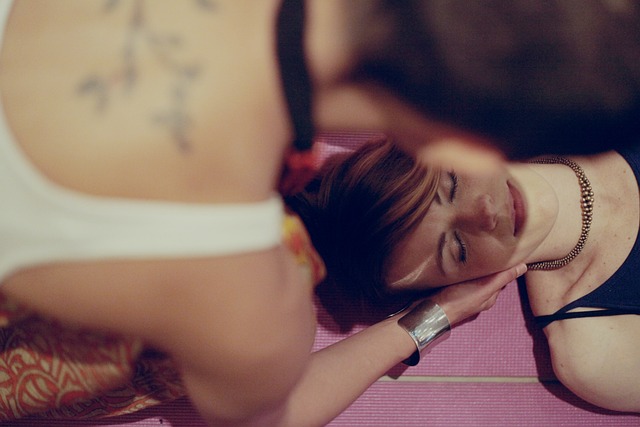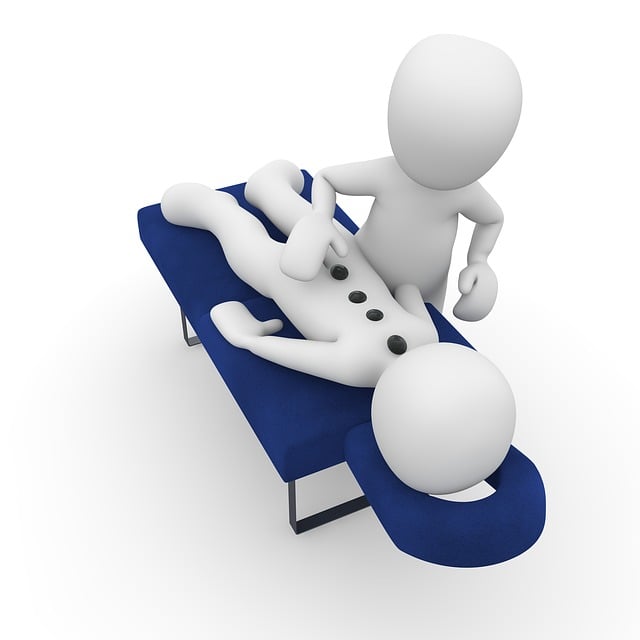Holistic health approaches that combine body therapy and mind therapy offer a comprehensive treatment strategy aimed at achieving optimal wellness. These approaches recognize the interconnected nature of physical and mental health and utilize therapies like acupuncture, massage, yoga, and meditation to create balance. Acupuncture helps regulate energy flow, while massage therapy eases physical discomfort and supports emotional well-being. Yoga integrates physical activity with breathwork and mindfulness to enhance flexibility, strength, and mental calmness. Nutrition plays a vital role in these practices as a foundation for health, influencing both cognitive function and mood. Meditation and mindfulness further support mental resilience by promoting awareness and presence, potentially leading to changes in brain structure that reinforce emotional equilibrium and self-regulation. These holistic practices collectively work to maintain a harmonious balance between the body and mind, contributing to overall health and healing. Body therapy and mind therapy, when practiced together, provide a powerful synergy that goes beyond symptom management, offering a deeper understanding of their interdependence and enhancing the effectiveness of health and wellness practices.
holistic treatments have gained prominence in contemporary wellness practices, offering a harmonious approach to health that intertwines body therapy with mind therapy. This article delves into the transformative power of these integrated methods, illustrating how they contribute to overall wellness. We will explore the synergistic effects of holistic therapies, such as acupuncture, massage, and yoga, and their role in bridging the divide between physical and mental health. Additionally, we’ll examine the significance of nutrition in nurturing both body and mind, and introduce meditation and mindfulness as pivotal practices for cultivating a balanced mind-body ecosystem. Join us as we unravel the connection between these therapies and how they can be harnessed to enhance your wellness journey.
- Embracing Holism: The Synergy of Body Therapy and Mind Therapy for Optimal Wellness
- Understanding the Connection: How Holistic Treatments Bridge the Gap Between Physical and Mental Health
- Exploring Complementary Therapies: Acupuncture, Massage, and Yoga as Integral Approaches to Healing
- The Role of Nutrition in Body Therapy and Mind Therapy: Fueling Wellness from the Inside Out
- Cultivating Mental Resilience: Meditation and Mindfulness Techniques for a Balanced Mind-Body Ecosystem
Embracing Holism: The Synergy of Body Therapy and Mind Therapy for Optimal Wellness

holistic approaches often integrate both body therapy and mind therapy to achieve a harmonious balance for optimal wellness. Body therapy encompasses a range of practices that address physical ailments, including massage therapy, physical rehabilitation, and energy work, which can alleviate pain, improve circulation, and enhance the body’s natural healing processes. Concurrently, mind therapy focuses on mental and emotional health, employing techniques such as meditation, cognitive-behavioral strategies, and psychotherapy to foster a state of mental clarity, resilience, and emotional well-being. The synergy between these two modalities is profound; when the body is treated with care, it can better support mental health, and conversely, a calm and focused mind can lead to improved physical health outcomes. This holistic approach ensures that individuals receive comprehensive care that attends to all facets of their well-being, leading to a more integrated and effective path to overall health.
Furthermore, the integration of body therapy and mind therapy is not merely about treating symptoms but also about fostering a deeper understanding of the interconnected nature of physical and mental health. For instance, stress management techniques can alleviate tension held in the body, while physical relaxation can create a conducive environment for contemplative practices to take root. This holistic mind-body treatment philosophy recognizes that the wellness of one cannot be achieved without considering the other, thus emphasizing the importance of a unified approach for those seeking comprehensive health and wellness solutions.
Understanding the Connection: How Holistic Treatments Bridge the Gap Between Physical and Mental Health

Holistic treatments represent a harmonious fusion of mind therapy and body therapy, acknowledging that physical health is deeply intertwined with mental well-being. These therapies are rooted in the belief that for overall wellness, one must address both the psychological and physiological aspects of health simultaneously. For instance, practices such as yoga and tai chi integrate physical postures, breath control, and meditation to cultivate balance and harmony within the body and mind. Additionally, acupuncture, a key component in holistic healthcare, has been shown to alleviate pain and stress by targeting specific points on the body, thereby influencing both the physical sensation of discomfort and the mental state of relaxation. By bridging the gap between the two, these treatments not only tackle issues at their core but also promote a more profound sense of health and vitality, reflecting the interconnected nature of our being.
The synergy between body therapy and mind therapy in holistic approaches is further exemplified through modalities like massage therapy and cognitive-behavioral techniques. Massage therapy, for example, not only addresses physical ailments such as muscle tension but also induces a state of relaxation that can reduce anxiety and depression. In contrast, cognitive-behavioral strategies within the realm of mind therapy can alleviate mental stressors, which in turn can manifest physically through reduced muscle strain and improved immune function. This bidirectional influence underscores the importance of considering both physical and psychological health when seeking a comprehensive treatment plan for overall wellness.
Exploring Complementary Therapies: Acupuncture, Massage, and Yoga as Integral Approaches to Healing

Holistic health practices often intertwine body therapy with mind therapy to foster overall wellness. Acupuncture, an ancient form of body therapy, has been practiced for centuries and continues to be a cornerstone in complementary healthcare. By inserting fine needles into specific points on the body, acupuncturists aim to balance the flow of energy, or ‘Qi’, which is believed to align with the body’s physical health. This practice can alleviate pain, regulate mood, and enhance the immune system, offering a multifaceted approach to healing.
Massage therapy is another integral component of holistic treatments, employing various techniques to manipulate the soft tissues of the body. It not only addresses muscular tension and physical ailments but also promotes mental relaxation and emotional well-being. Through skilled touch, massage can improve circulation, reduce stress hormones, and stimulate the lymphatic system, contributing to a harmonious balance between mind and body.
Yoga marries physical postures, breathwork, and meditative practices into a holistic mind therapy that has gained widespread popularity. By synchronizing movement and breath, yoga enhances flexibility, strength, and balance in the physical body while simultaneously calming the mind and nurturing mental clarity. Regular yoga practice can lead to improved mood, reduced stress levels, and an increased sense of inner peace, making it a valuable tool for maintaining overall health and wellness. These complementary therapies work synergistically to address both the physical and mental aspects of health, offering a comprehensive approach to healing and well-being.
The Role of Nutrition in Body Therapy and Mind Therapy: Fueling Wellness from the Inside Out

In the realm of holistic health, nutrition emerges as a pivotal element in both body therapy and mind therapy, each influencing the other in a symbiotic dance that fuels wellness from within. A balanced diet rich in essential nutrients not only nourishes the physical body but also impacts cognitive function, mood, and mental clarity. For instance, omega-3 fatty acids are known to support brain health, potentially enhancing focus and reducing inflammation throughout the body. Similarly, antioxidant-rich foods can protect cells from oxidative stress, contributing to a more resilient physical form and a clearer mind. Incorporating a variety of whole foods into one’s regimen can lead to improved energy levels, better sleep patterns, and an overall sense of wellbeing, which are crucial for both body therapy and mind therapy practices. This nutritional foundation is essential for individuals seeking to harness the full benefits of these therapeutic approaches, as it provides the necessary fuel for the body’s systems and the mind’s processes, thereby optimizing the potential for holistic healing and maintaining optimal health. Engaging in body therapy and mind therapy with a nutrient-dense diet ensures that each session is not just an isolated experience but part of a comprehensive lifestyle that promotes overall wellness.
Cultivating Mental Resilience: Meditation and Mindfulness Techniques for a Balanced Mind-Body Ecosystem

Engaging in meditation and mindfulness practices can significantly enhance mental resilience within the mind-body ecosystem. These therapies, often encompassed under the umbrella of holistic health, offer a profound avenue for body therapy and mind therapy. By fostering a heightened state of awareness and presence, individuals can cultivate an adaptive response to stress, leading to a more balanced mental state and improved overall wellness. Mindfulness, in particular, trains the mind to observe thoughts and sensations without attachment, promoting emotional stability and reducing reactivity. This practice can alter brain regions related to memory, perspective-taking, and empathy, thereby fostering a healthier psychological landscape.
Furthermore, regular meditation practices, which range from focused attention to open monitoring, have been shown to increase grey matter density in the hippocampus, known for its role in learning and memory, and in structures associated with self-regulation and perspective-taking. These neuroplastic changes underscore the effectiveness of meditation as a tool for body therapy and mind therapy, demonstrating its ability to physically transform the brain towards a more resilient state. Incorporating these techniques into daily routines can create a ripple effect throughout the entire mind-body system, promoting a harmonious balance that supports overall wellness.
Holistic mind-body treatments offer a comprehensive approach to wellness, harmonizing body therapy and mind therapy to promote overall health. This article has illuminated the multifaceted benefits of such integrative practices, from acupuncture and massage to yoga and nutrition, all contributing to a balanced mind-body ecosystem. By understanding the profound connection between physical and mental health, individuals can leverage these therapies effectively. As we conclude, it’s clear that embracing holism is not just a trend but a transformative journey towards sustained wellness. Integrating these treatments into one’s lifestyle can lead to profound improvements in quality of life, underscoring the importance of a comprehensive approach to healthcare that encompasses body therapy and mind therapy.
